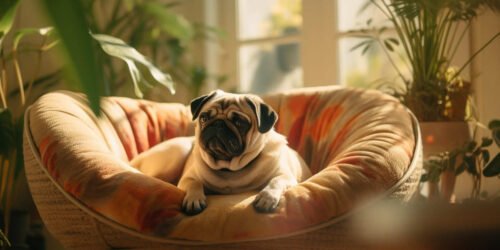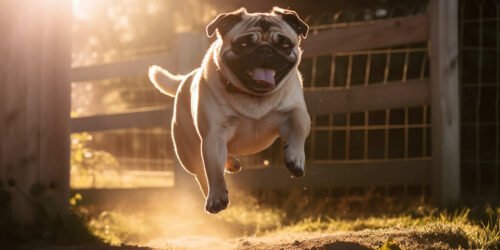Can Pugs Be House Trained?
Introduction
Are you wondering if your cuddly new pug pup can be house trained? I’ve shared the same concern, because training a pug is no walk in the park, partially due to their distinctive stubborn streak.
Through extensive research and hands-on experience, I’ve uncovered effective strategies that will help alleviate your worries. Let’s dive into this guide to unravelling the intricacies of house-training your adorable companion!
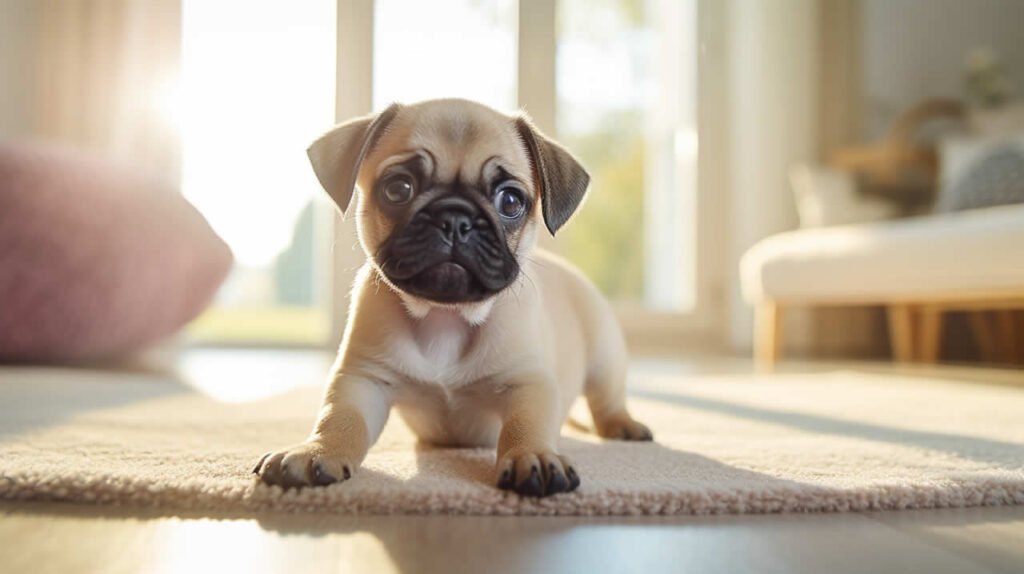
Table of Contents
Key Takeaways
- House training a pug can be challenging due to their stubborn nature and small bladders.
- Effective potty training methods for pugs include crate training, bell training, scheduled potty breaks, paper training, constant supervision, and cleaner training.
- The timeline for house training a pug can range from a few weeks to several months. Consistency is key during the process.
- Tips for successful house training include establishing a consistent routine, using positive reinforcement and rewards, and remaining patient throughout the process.
Can Pugs Be House Trained?
House training can be quite challenging for pugs due to their stubborn nature and small bladders.
House training challenges for Pugs
Training a pug can be tricky but not impossible. Pugs, like any other breed, have their unique behavioural quirks and one of them is stubbornness, which can pose some hurdles during house training.
The tiny size of these adorable creatures makes it hard for them to wait for you to take them outside when nature calls. This issue gets complicated in winter as pugs don’t deal well with cold weather; hence they aren’t thrilled about going outside then – thus making house training difficult.
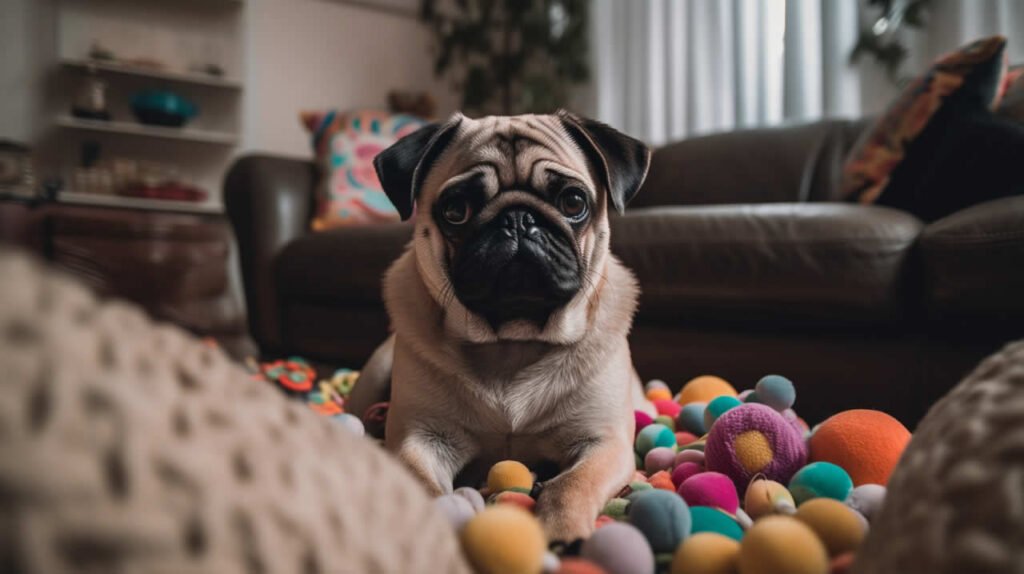
Furthermore, due to the flat-nosed structure (brachycephalic trait), Pugs often tend to experience breathing issues which may cause distractions or difficulties during the training process.
Lastly, remember that consistency is key and your cute little friend will soon become accustomed to their new routine!
Potty training methods for Pugs
Keeping in mind that pugs can indeed be house trained, here’s a closer look at various effective potty training methods.
- Crate Training: This method capitalises on the typical dog’s natural aversion to soiling where they sleep. The proper size of the crate is critical—you want it to just fit your pug comfortably.
- Bell Training: Hang a bell by the door and teach your pug to ring it when they need to go outside. This gives them a simple, understandable method of communication. Consistency is key with bell training.
- Scheduled Potty Breaks: Set specific times to take your pet out for toilet breaks, like after meals or before bed time. Regular schedules make training easier for both you and your pug.
- Paper Training: Paper training can be good for small breeds like pugs who don’t need as much space to relieve themselves—this involves setting up a designated “bathroom area” inside with pee pads or newspaper.
- Constant Supervision: Especially during initial stages of house training, keep an eye on your pug at all times indoors—learn their telltale signs of needing to use the bathroom (sniffing around, walking in circles) and immediately take them outside when they show these indications.
- Cleaner Training: Clean any accidents thoroughly with an enzymatic cleaner designed for dog urine—it removes odours that might encourage dogs to soil the same spots again.
Typical timeline for house training a Pug
Training your adorable pug at home could take a few weeks to several months. Yes, it sounds like a long time but remember, every Pug is unique with their own pace of learning. Most Pugs can be house trained when they reach the age of 4 to 6 months old, though some might not fully master it until they are almost a year old.
Can pugs be house trained quicker? Absolutely! But rushing the process may backfire and create lasting bad habits instead of good ones. So hang in there patiently while also remaining consistently committed because your effort will pay off once your little friend becomes fully comfortable with his bathroom etiquette!
Tips for Successful Pug House Training
When house training a Pug, it is important to establish a consistent potty training routine, use positive reinforcement and rewards, and remain patient throughout the process.
Establish a potty training routine
When house training a Pug, establishing a consistent potty training routine is crucial. Here are some tips to help you create an effective routine for your furry friend:
- Set specific times for potty breaks: Take your Pug outside first thing in the morning, after meals, after naps, and before bedtime. This regular schedule will help them understand when it’s time to go.
- Use a designated potty area: Choose a spot in your yard where you want your Pug to do their business. Take them to that spot every time they need to go so they associate it with going potty.
- Stay with them outside: While your Pug is learning, stay with them outside during potty breaks. This allows you to reinforce the behaviour you want by praising and rewarding them immediately after they do the right thing.
- Use verbal cues: Choose a simple phrase like “go potty” or “do your business” and consistently use it when taking your Pug outside. Eventually, they will recognize this cue and know what is expected of them.
- Monitor their water intake: Keep an eye on how much water your Pug drinks and adjust their access accordingly. Limiting water intake before bedtime can help minimise accidents during the night.
- Keep track of their bathroom habits: Make note of when your Pug typically needs to go so you can anticipate their needs better in the future and ensure regular bathroom breaks are part of their routine.
Use positive reinforcement and rewards
During the house training process, it’s crucial to use positive reinforcement and rewards with your pug. Pugs are known for their love of food, so treats can be a powerful motivator.
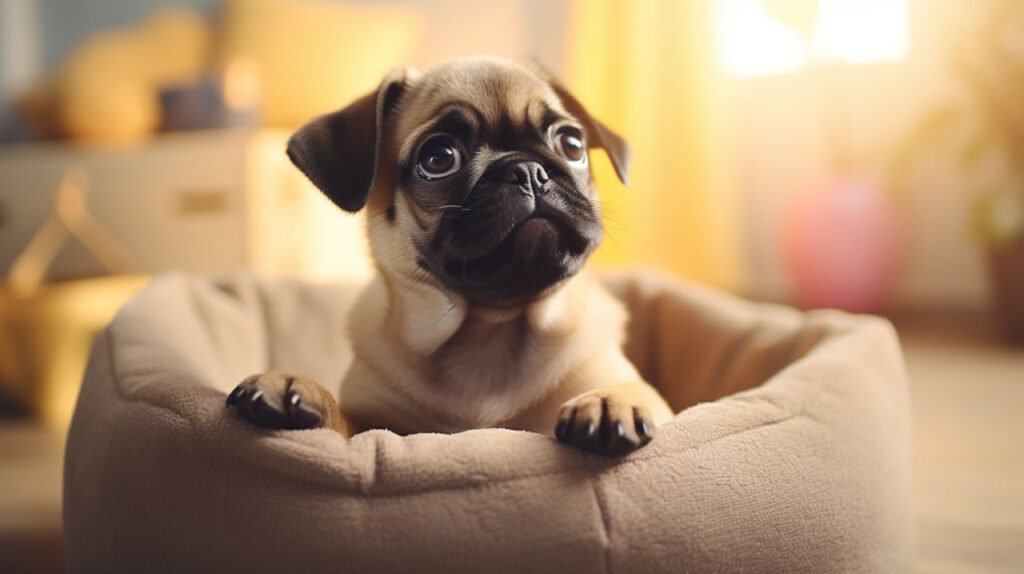
Whenever your pug successfully goes to the toilet outside or in their designated spot, give them plenty of praise and a tasty treat as a reward. This helps them associate going to the bathroom in the right place with something positive.
Consistency is key when using positive reinforcement. Make sure to give your pug immediate praise and rewards every time they do their business correctly. This will help reinforce the desired behaviour and make them more likely to repeat it in the future.
Keep in mind that every dog is different, so you may need to try different types of rewards until you find what works best for your pug. Some dogs respond well to small treats, while others prefer verbal praise or even playtime with a favourite toy.
Be consistent and patient throughout the process
Consistency and patience are key when it comes to house training a Pug. It’s important to establish a routine and stick to it consistently, taking your Pug outside at the same times every day.
This will help them understand where and when they should go potty. Additionally, be patient with your Pug while they learn this new behaviour. Accidents may happen in the beginning, but with consistent reinforcement of desired behaviours and plenty of positive rewards, your Pug will eventually understand what is expected of them.
Remember, consistency and patience are essential for successful house training with any breed, including Pugs!
Conclusion
In conclusion, while house training a pug may present some challenges, it is definitely possible to successfully teach them proper potty habits. By establishing a consistent routine, using positive reinforcement, and being patient throughout the process, you can help your pug become well-behaved and house trained.
Don’t let their cheeky little faces fool you – with a little effort and dedication, your pug can be just as well-behaved as any other breed!





